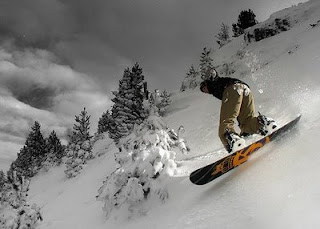- Find some proper snowboarding training. Whilst you can have a little proceed without instruction it is not advised even if you are experienced in other snowboarding. Poor or lack of instruction is responsible for over 15% of all snow-boarding injuries. Even one day associated with tuition will dramatically decrease your chances of injury so it’s really worth investing in. With a single day’s college tuition you can learn to ride and fall correctly which will tremendously help you when you ride by yourself.
- You need to make sure you training properly and don’t overestimate your capabilities. It is better to master some simple and intermediate slopes rather than moving over between slopes constantly. This can give you time to practice handle and the constant repetition will establish your skills quickly. Don’t make the mistake of overestimating your skills and trying in order to tackle runs beyond your degree. This will result in you rapidly finding yourself out of your level and attempting manoeuvres beyond your capacity is a quick way to hurt yourself.
- Get physically top fit and warm up thoroughly just before tackling the slopes. In good physical condition will make you much less likely to come to harm about the slopes. Cardio and muscle mass building exercises will help you be in far better condition and less likely to harm yourself should you fall.
- Wearing the correct protective garments is an absolute must. When you might not be the coolest person hitting the slopes if you tumble you really won’t regret it. Wearing hand supports, knee pads plus a helmet will protect you from basically the most severe fall so that you should buy or rent tis equipment before travelling.
- Pay attention to the run type, the circumstances and stay on piste. Off pisting is very dangerous even if you are an expert same with not recommended. Sticking to the conditions as well as run types that suit your level is an absolute need to. Whatever you do don’t hit the slopes if you are ill or perhaps if you have been drinking.
- Keep your gear in good working purchase and make sure you have equipment which is suitable to your level of skill. Having a good board that is shined up correctly and is suited for the rate and manoeuvring you are capable of is completely vital to keep you risk-free. Most winter sports stores will be able to fit you properly depending on your skills as well as ensuring your own boots match your board specifically.
Finally although these tips will help you say safe accidents can and will happen. For this reason we would firmly advice some kind of winter travel insurance so that should you have an accident you may receive the quickest and best medical care possible.
